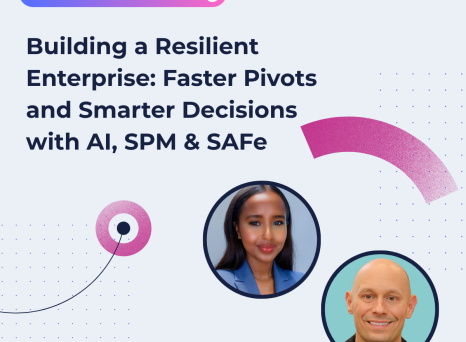A common mistake that leaders of an Agile Transformation make is to proclaim that “Agile is everyone's responsibility” without assigning specific tasks to specific people (and the accountability that goes with it).
Building a RACI chart can be an effective tool in prompting stakeholders in the Agile Transformation project to take the right actions, and maintaining responsibility at the right level (as opposed to being pushed up the chain of command).
What is a RACI matrix?
RACI stands for Responsible, Accountable, Consulted, Informed, and reflects the different levels of involvement of stakeholders in a given project.
A classic RACI chart or matrix may look something like this:
Whenever a stakeholder is involved in a given task, the corresponding cell is filled with an R, A, C or I to indicate their level of responsibility:
- Responsible means that this stakeholder performs the work. There will normally be at least one Responsible party for each task in the matrix, but you can have several.
- Accountable means that this stakeholder oversees the activity: they delegate the work, but are in charge of giving final approval for it before it can be marked “done”. Contrary to “Responsible”, there should only be one person Accountable, but it can be the same as the person Responsible for the task.
- Consulted means that this stakeholder's opinion is sought as input for the task, with communication going both ways. “Consulted” people will often be subject matter experts, or people whose work will likely be impacted by the choices and decisions being made by this task.
- Informed means that this stakeholder is kept up-to-date with what's going on with the task. The communication is 1-way (from the project to the stakeholder) and they generally don't receive all the nitty-gritty details.
Every stakeholder should have a role on each activity, though many of them will likely be “Informed”.
Why is a RACI chart useful?
By clearly stating the level of responsibility of each stakeholder, the RACI chart sets expectations and helps limit the dreaded “diffusion of responsibility” that typically results in inaction, and subsequent stagnation of the project. Instead of focusing on politics, and vying for position on the key influence tasks, project members can focus on actually getting the work done.
In this article, we used the example of an Agile Transformation, but RACI matrices are a versatile tool that can be used in pretty much any type of project including Digital Transformation, product development or change management projects.
RACI charts are particularly useful in situations where activities are not quite straightforward: there are conflicts about who does what, they require multiple resources, are dependent on each other or are run at the same time.


